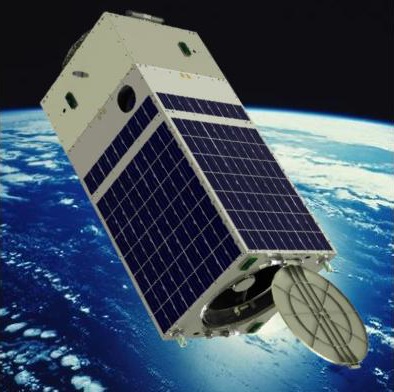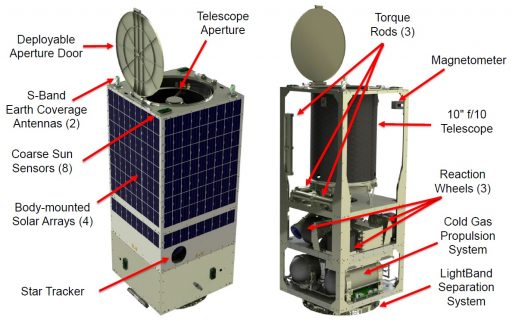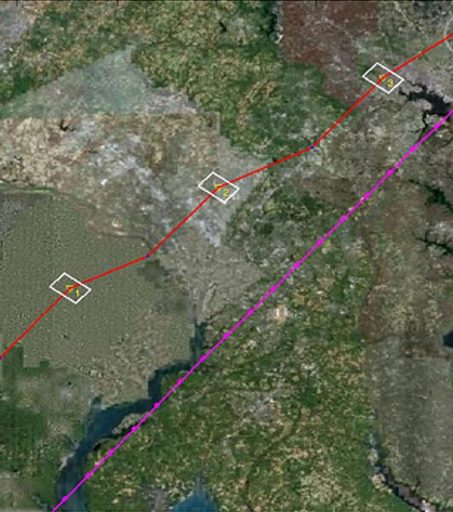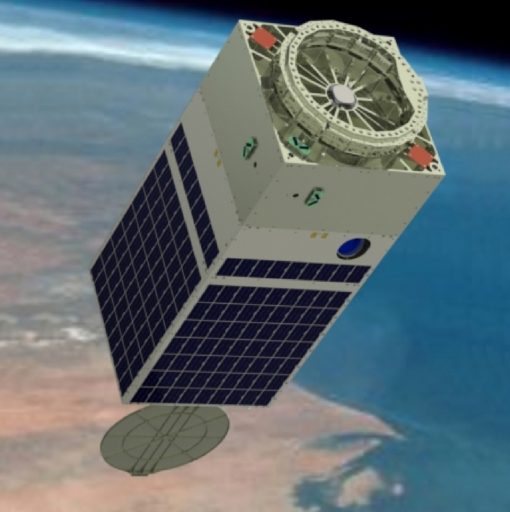Kestrel Eye 2M Satellite

Kestrel Eye 2M is a 50-Kilogram microsatellite for high-resolution imaging, built by Maryland Aerospace Inc. for operation by the U.S. Army Space and Missile Defense Command as a pathfinder for a constellation of low-cost satellites that can support ultra-quick tasking to deliver responsive imagery to the warfighter on the ground.
Kestrel Eye is being developed as a microsatellite-class imagery satellite that can be tasked directly by the tactical ground component warfighter and delivers user-ready imagery products directly to the warfighter via a data network that is also accessible by other warfighters without any relay via the U.S. main land and no data filtering. The primary objective is to demonstrate a tactical space-based imagery microsatellite that could be produced in series to provide a persistent capability to deployed forces.
The initial Kestrel Eye mission will demonstrate the satellite can be tasked to take a picture of a target ground area of interest and return that image to the warfighter during the same satellite pass with a tasking-to-product cycle of ten minutes or less. Up to 40 Kestrel Eye satellites are considered to be launched and concepts also exist for a responsive launch scheme to be able to set up passes over regions of interest as required.

The Kestrel Eye program will extend the Unmanned Aerial Vehicle paradigm and provide coverage over denied areas, invulnerable to surface-to-air missiles. The use of low-cost satellites enables a constellation of many satellites to be established to collect rapid revisit cycle imagery – covering relevant areas much more often than the current powerful & expensive space assets. Kestrel Eye’s operational concept comprises the satellites in orbit and laptops & S-Band transceivers on the ground to request, receive and display imagery collected by the satellite.
Plans for Kestrel Eye foresee a constellation with five orbital planes and eight satellites per plane with a unit cost of around $1.3 million and the use of small-satellite launch vehicles to be able to deliver the satellites to their correct positions within the constellation at the required schedule – not possible when taking a shared ride on a larger launch vehicle.

Operators on the ground would have a simple user interface displaying a map with the satellite’s ground track and field of regard that allows users to select targets along the satellite’s ground track and directly send the request to the satellite. A novel software on the satellite would then compute the planned imaging sequence, taking into account multiple requests made for a single pass, and actuate the satellite’s pointing systems and imaging payload to capture 1.5-meter resolution imagery of the targets. The operation of the satellite is fully autonomous and designed to maximize the number of targets imaged during a single pass.
Initiated in 2012, the Kestrel Eye program planned a Block I pathfinder mission which was replaced with two types of improved Block II satellites – Block IIM contracted to Maryland Aerospace Inc. (MAI) and Block IIA contracted to Spaceflight Industries, Inc. in 2013 to have a resilient constellation immune to systematic failures intrinsic to a single satellite platform.
The Block IIM satellites are based on MAI’s MAGICBus platform – a low-cost microsatellite bus with built-in communications encryption, propulsive orbit maintenance capability for constellation control, accurate attitude control and fast pointing combined in a compact satellite platform that enables launch as secondary payload on large launchers or dedicated rides on small satellite launchers. In its electro-optical imaging configuration, the satellite platform is purpose-built to be able to deliver imagery in near-real time, featuring a 25-centimeter aperture telescope.

The MAGICBus can weigh between 50 and 102 Kilograms and measures between 38 x 38 x 97 and 46 x 46 x 107 centimeters in size. The satellite uses Star Trackers as primary attitude sensors with coarse sun sensors, magnetometers and an inertial platform in an assisting role while three reaction wheels and magnetic torquers provide attitude actuation. The platform achieves a pointing knowledge of 0.01° and pointing accuracy of +/-0.15°, capable of supporting slew rates of 3°/second and off-nadir imaging at up to 30 degrees.
Communications are software-encrypted and sent to the ground via >10-Watt S-Band Earth Coverage Antennas. When used for Kestrel Eye & deployment from ISS, the MAGICBus uses its cold gas propulsion system option that allows for a delta-v budget of 16 meters per second, allowing for limited orbit maintenance in the low-altitude regime as well as stationkeeping within a potential future constellation of satellites.
The Kestrel Eye Block 2M satellites capture images in spotlight mode, covering a ground area of 4 by 6 Kilometers from a 500-Kilometer orbit. Strip-imaging of larger areas is also possible and the satellite’s ground resolution is 1.5 meters (from a 500km orbit). Onboard storage is provided for up to 600 images.
